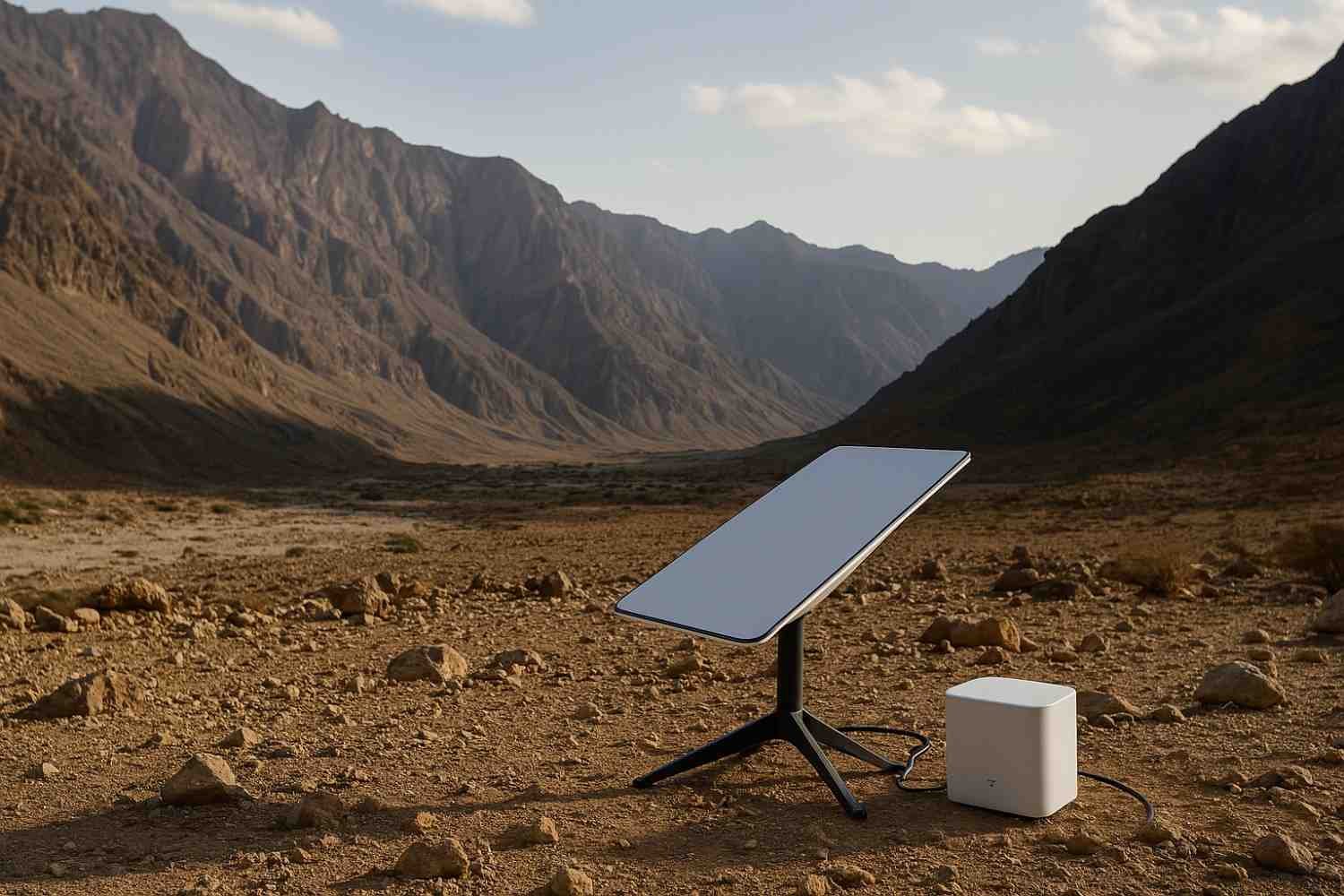Starlink’s fixed telecommunications services are now officially available in Oman, marking a significant milestone in bridging connectivity gaps in the Sultanate’s rugged and hard-to-reach regions. The service aims to provide reliable internet access to areas where traditional infrastructure development, such as communication towers, faces challenges due to difficult terrain.
The Telecommunications Regulatory Authority (TRA) recently granted Starlink a Class 1 licence, allowing the company to offer broadband services throughout Oman. This move aligns with the government’s objectives of expanding digital infrastructure and encouraging innovation across the country’s governorates. Starlink’s service is expected to play a crucial role in connecting telecommunications towers in geographically isolated regions, benefiting key industries such as oil and gas, mining, tourism, and agriculture.
According to Starlink’s official website, residential services in Muscat will be priced at RO 30 per month, with a one-time hardware installation fee ranging between RO 80 and RO 160, depending on the selected equipment. Additionally, Starlink has introduced business packages tailored to corporate clients and larger operations.
The satellite internet service offers high-speed, low-latency connectivity that supports activities such as streaming, video conferencing, online gaming, and remote work — services that are often unreliable or unavailable in remote areas. Starlink also provides a compact, portable user kit that fits easily into a backpack. Designed for flexibility, the kit includes a built-in Wi-Fi router, has low power consumption, and operates using DC power input, with download speeds exceeding 100 Mbps.
Starlink, operated by Starlink Services, LLC, a subsidiary of SpaceX, is a global telecommunications provider. The satellite constellation currently serves over 100 countries and territories, revolutionizing access to digital connectivity in both urban and remote regions.
Canada was the first country outside the United States to approve the use of Starlink. On November 6, 2020, Innovation, Science, and Economic Development Canada granted regulatory approval for the low Earth orbit (LEO) satellite constellation.
In another significant development, Starlink expanded into the aviation sector. On October 22, 2024, Qatar Airways launched the first Starlink-equipped Boeing 777 aircraft on a flight from Doha to London, offering passengers enhanced onboard internet speed and reliability. This milestone highlights Starlink’s expanding presence across multiple industries, including land, sea, and air transport.















